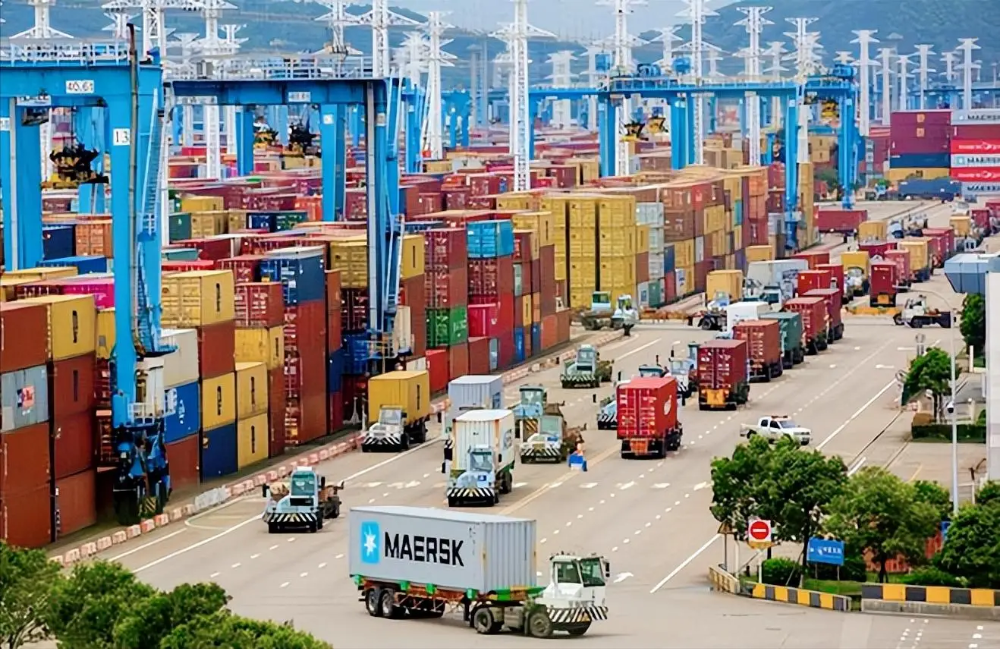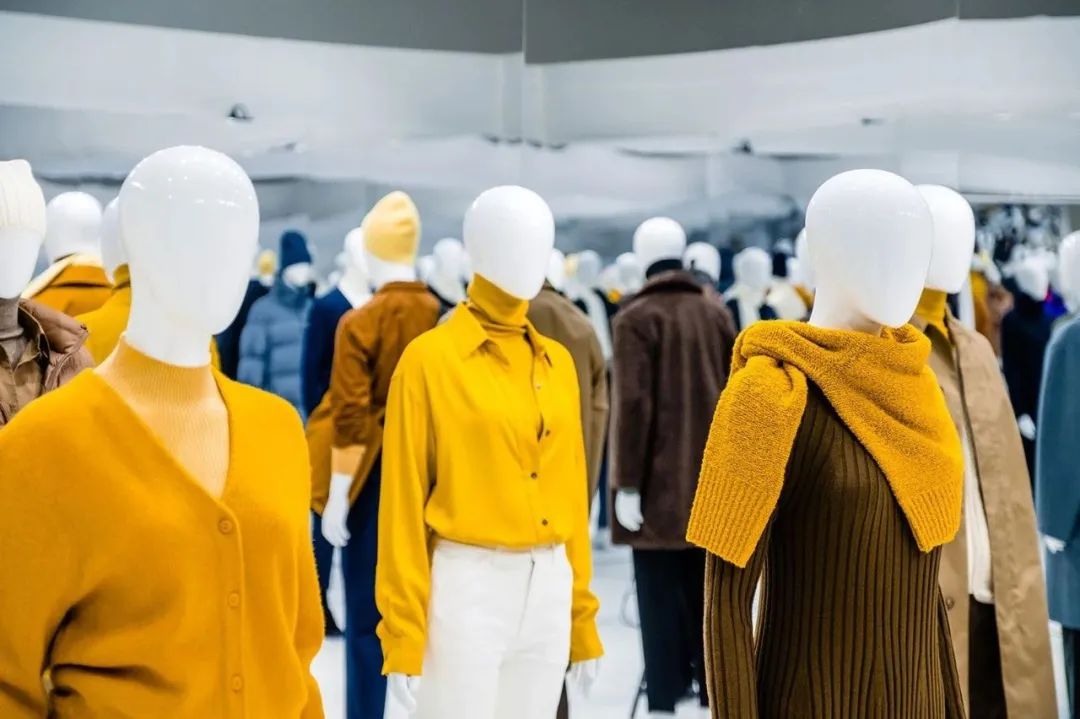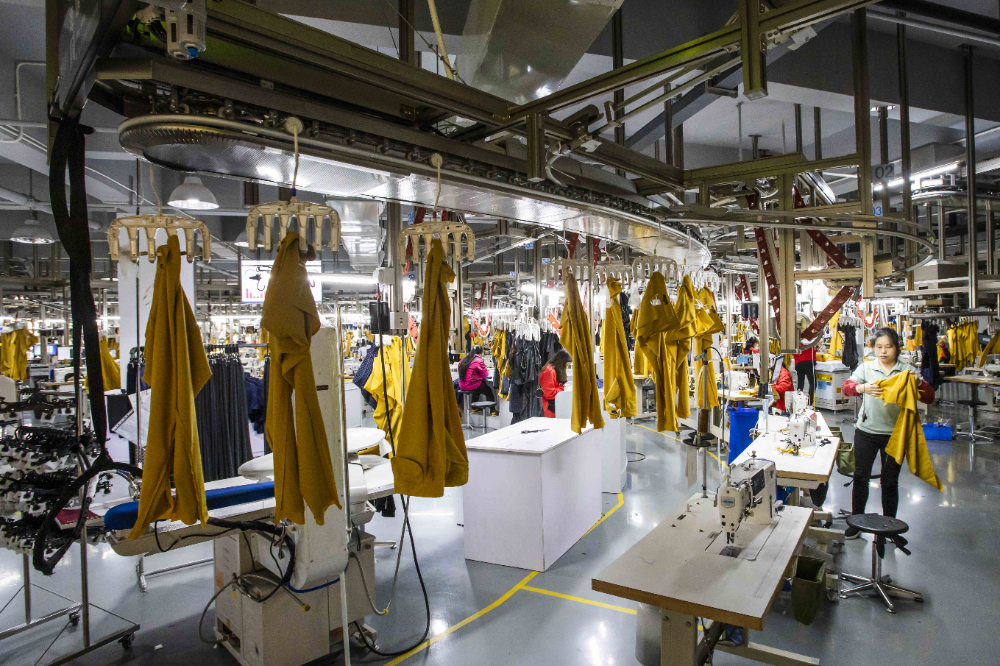2025 Mid-Year Review of the Apparel Industry: Retail Growth Slows, Sports Brands Lead the Capital Track
Textile and Apparel Weekly
2025-07-23 16:02:41
Recently, data released by the National Bureau of Statistics has revealed new trends in the apparel industry: From January to June 2025, the retail sales of clothing, shoes, hats, and knitwear in China reached 742.6 billion yuan, a year-on-year increase of 3.1%. However, the retail sales for June alone were 127.5 billion yuan, with a growth rate of only 1.9%, indicating subtle changes in market demand.
Meanwhile, from January to June 2025, the cumulative export value of textiles and garments in China was USD 143.978 billion, a year-on-year increase of 0.76%. Among them, the cumulative export value of textiles was USD 70.519 billion, a year-on-year increase of 1.77%, while the cumulative export value of garments was USD 73.459 billion, a year-on-year decrease of 0.2%. In June, China's export of textiles and garments increased month-on-month, reaching its highest level in five months. Textile exports decreased both month-on-month and year-on-year, whereas garment exports increased both month-on-month and year-on-year, reflecting differences in international market demand.
Risk Alert for the Second Half of the Year:
Cost, Inventory, and International Competition
Looking ahead to the second half of the year, the apparel industry will face multiple challenges. Foremost among them are cost and inventory pressures. In the raw materials market, the China Cotton Price Index has been continuously rising. As of July 11, the China Cotton Price Index stood at 15,266 yuan per ton, up 66 yuan per ton from the previous week, up 482 yuan per ton over the past month, and up 591 yuan per ton since the beginning of the year. The fluctuations in cotton prices, combined with insufficient end-market demand, may compress the profit margins of small and medium-sized textile and apparel enterprises.

Externally, the US and Vietnam have reached a new tariff agreement, and the tariff adjustments will have an impact on multiple parties: On July 2, the US and Vietnam reached a trade agreement under which the US will impose a 20% tariff on Vietnam’s main export products and a 40% tariff on “transshipped” products. This is an increase from the previous provisional rate of 10%, but a decrease from the 46% rate on April 2. This trade agreement can serve as a reference for domestic enterprises planning to expand into Cambodia and other Southeast Asian countries.
Some international clothing brands have already disclosed that tariff cost pressures will be reflected in the prices of certain end products in the second half of 2025, while other costs will be jointly borne by the brands and the supply chain.
Overall, the tariff increases in Southeast Asia remain lower than those in China, so there is still a relative advantage, but costs are rising. Small and medium-sized enterprises in the textile and apparel industry may face greater pressure, while leading companies, leveraging their scale, customer base, and supply chain advantages, can optimize profitability through improved efficiency and cost pass-through, thus maintaining their competitive edge.
Enterprise Semi-Annual Report: Showing Divergent Development Trends
Recent half-year reports for 2025 released by various clothing companies present a picture of "the sports sector leading the way, while traditional sectors experience the growing pains of transformation."
In the first half of 2025, Anta Sports led the market value rankings of Chinese listed apparel companies with a significant lead of 265.28 billion yuan, becoming the only apparel company to enter the trillion-yuan club. Its market value increased by about 22% compared to the end of 2024 (217.9 billion yuan). Additionally, three companies, Shenzhou International, Huafu Group, and Bosideng, entered the 50 billion yuan club, while another 12 companies entered the 10 billion yuan club.
Notably, in the top 50 rankings, sports brands dominate, occupying two of the top five spots (Anta, Li Ning), while Xtep International and 361 Degrees are also in the top 20. Additionally, sports product manufacturers and distributors such as Shenzhou International, Huafu Group, Yue Yuen Industrial, and Topsports are also among the leaders, indicating that sports apparel has become a golden track in the capital market.
According to Anta Sports' 2025 half-year report, in the first half of this year, the retail sales value of Anta brand products achieved mid-single-digit growth compared to the same period in 2024; the retail sales value of FILA brand products achieved high-single-digit growth compared to the same period in 2024; and the retail sales value of all other brand products achieved growth of 60% to 65% compared to the same period in 2024.
According to a research report by China Galaxy Securities, Anta Group is pursuing diversified development and continuously optimizing channel quality. By creating a differentiated store matrix tailored to various commercial districts and consumer groups, the company has achieved an upgrade and innovation of its offline channels. In addition, Anta Group continuously focuses on research and innovation in the sports field, with self-developed sports technologies covering the full spectrum of market scenarios. At the same time, the Group adheres to a multi-brand and global layout, with the outdoor segment contributing incremental growth to the Group.
The collective rise of sports brands is by no means accidental. Anta is penetrating the high-end market and global expansion through a multi-brand matrix, Li Ning continues to increase investment in technological research and development, and Xtep is deeply cultivating the marathon niche to establish professional barriers. These leading companies are building comprehensive moats from product innovation to brand storytelling.
In contrast, the traditional apparel sector sees some brands experiencing the growing pains of transformation. Aside from Bosideng, which maintains its fourth position through a specialized down jacket strategy, Youngor and HLA have held onto spots in the top ten by relying on channels and product scale. However, the former "street king" Metersbonwe has dropped to the 32nd position, with the giant's turnaround lagging.
 On July 14, Metersbonwe Apparel announced that its net profit attributable to shareholders for the first half of 2025 is expected to be only 7 million to 10 million yuan, a sharp decline of 86.98% to 90.88% compared to 76.78 million yuan in the same period last year. This plunge, like a roller coaster dive, drags the company back to a low profit valley. The core reasons include a surge in credit impairment losses (such as the outbreak of bad debt risks in accounts receivable) and the disappearance of gains from asset disposals—previously, the company relied on asset sales to “beautify the financial statements,” but this financial tactic has failed, exposing the weakness in the main business's ability to generate cash flow.
In recent years, founder Zhou Chengjian has attempted to transform Metersbonwe through an asset-light approach and brand rejuvenation, but financial data reveals the growing pains of this transformation: revenue has shrunk, with the 2024 half-year report showing revenue at only 414 million yuan, a year-on-year decrease of over 25%, reflecting weak terminal sales. The asset-liability ratio has risen, and although specific data has not been disclosed, overdue bills and credit impairments suggest that debt pressure has not been alleviated. In the fashion track, Metersbonwe's "Guochao" strategy has yet to establish a differentiated barrier.
Additionally, the semi-annual performance forecast announcement released by Ningbo Peacebird Fashion Apparel Co., Ltd. has also stirred ripples like a large stone thrown into the lake of fashion retail. The announcement shows that the company expects a net profit attributable to shareholders of approximately 77.7 million yuan for the first half of 2025, a decrease of about 93.49 million yuan compared to the same period last year, representing a sharp year-on-year drop of around 55%. Meanwhile, the net profit attributable to shareholders after deducting non-recurring gains and losses is expected to be only about 13.7 million yuan, down 51.31 million yuan year-on-year, with a decline as high as approximately 79%. This set of data acts like a mirror, reflecting the struggles and pains of domestic fashion retail enterprises amid the transformation of the consumer market and the wave of industry restructuring.
The core reason for Peacebird's performance decline in this half-year period, as pointed out in the announcement, lies in the sharp contradiction between the slowdown at the retail end and the rigid pressure of costs. During the reporting period, the company's retail performance declined year-on-year, leading to a roughly 8% drop in operating revenue. In stark contrast, fixed expenses such as rent for company-operated stores and employee salaries acted like a heavy "anchor," making it difficult to adjust flexibly with revenue fluctuations. This directly resulted in a year-on-year decrease in net profit, excluding non-recurring items, by 51.31 million yuan. This phenomenon of "limited revenue decline but significant profit collapse" exposes the vulnerability of Peacebird's asset-heavy operating model in countercyclical situations.
In this consumer transformation, enterprises need to more keenly perceive market trends, seeking new growth points and competitive advantages through innovation-driven development, brand upgrading, and model transformation, in order to achieve sustainable development amid fierce market competition.
On July 14, Metersbonwe Apparel announced that its net profit attributable to shareholders for the first half of 2025 is expected to be only 7 million to 10 million yuan, a sharp decline of 86.98% to 90.88% compared to 76.78 million yuan in the same period last year. This plunge, like a roller coaster dive, drags the company back to a low profit valley. The core reasons include a surge in credit impairment losses (such as the outbreak of bad debt risks in accounts receivable) and the disappearance of gains from asset disposals—previously, the company relied on asset sales to “beautify the financial statements,” but this financial tactic has failed, exposing the weakness in the main business's ability to generate cash flow.
In recent years, founder Zhou Chengjian has attempted to transform Metersbonwe through an asset-light approach and brand rejuvenation, but financial data reveals the growing pains of this transformation: revenue has shrunk, with the 2024 half-year report showing revenue at only 414 million yuan, a year-on-year decrease of over 25%, reflecting weak terminal sales. The asset-liability ratio has risen, and although specific data has not been disclosed, overdue bills and credit impairments suggest that debt pressure has not been alleviated. In the fashion track, Metersbonwe's "Guochao" strategy has yet to establish a differentiated barrier.
Additionally, the semi-annual performance forecast announcement released by Ningbo Peacebird Fashion Apparel Co., Ltd. has also stirred ripples like a large stone thrown into the lake of fashion retail. The announcement shows that the company expects a net profit attributable to shareholders of approximately 77.7 million yuan for the first half of 2025, a decrease of about 93.49 million yuan compared to the same period last year, representing a sharp year-on-year drop of around 55%. Meanwhile, the net profit attributable to shareholders after deducting non-recurring gains and losses is expected to be only about 13.7 million yuan, down 51.31 million yuan year-on-year, with a decline as high as approximately 79%. This set of data acts like a mirror, reflecting the struggles and pains of domestic fashion retail enterprises amid the transformation of the consumer market and the wave of industry restructuring.
The core reason for Peacebird's performance decline in this half-year period, as pointed out in the announcement, lies in the sharp contradiction between the slowdown at the retail end and the rigid pressure of costs. During the reporting period, the company's retail performance declined year-on-year, leading to a roughly 8% drop in operating revenue. In stark contrast, fixed expenses such as rent for company-operated stores and employee salaries acted like a heavy "anchor," making it difficult to adjust flexibly with revenue fluctuations. This directly resulted in a year-on-year decrease in net profit, excluding non-recurring items, by 51.31 million yuan. This phenomenon of "limited revenue decline but significant profit collapse" exposes the vulnerability of Peacebird's asset-heavy operating model in countercyclical situations.
In this consumer transformation, enterprises need to more keenly perceive market trends, seeking new growth points and competitive advantages through innovation-driven development, brand upgrading, and model transformation, in order to achieve sustainable development amid fierce market competition.
【Copyright and Disclaimer】The above information is collected and organized by PlastMatch. The copyright belongs to the original author. This article is reprinted for the purpose of providing more information, and it does not imply that PlastMatch endorses the views expressed in the article or guarantees its accuracy. If there are any errors in the source attribution or if your legitimate rights have been infringed, please contact us, and we will promptly correct or remove the content. If other media, websites, or individuals use the aforementioned content, they must clearly indicate the original source and origin of the work and assume legal responsibility on their own.














